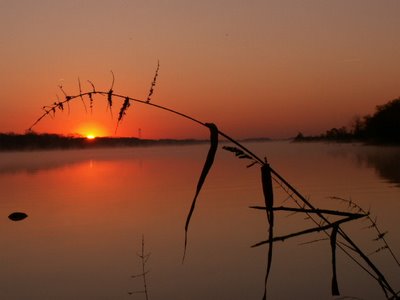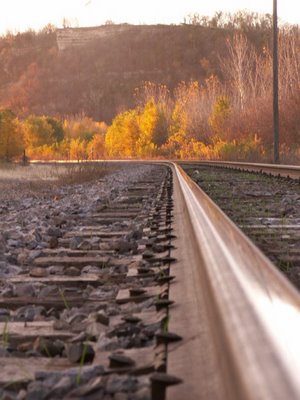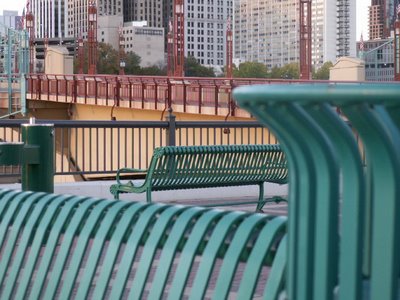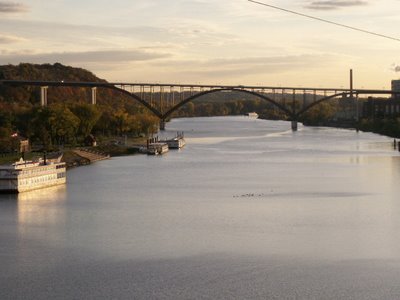 Hannibal, MO. Not far from the marina where we stayed for 2 days in Hannibal, was this 3-story brick structure. On the marina side, facing town, was a tacky, garish, lit sign proclaiming "BUBBA'S". Half of the ground floor of the building now serves as a low-rent bar catering to bikers and pick-up drivers. Once or twice weekly Karaoke nights draw in Hank Williams or Johnny Cash wannabes.
Hannibal, MO. Not far from the marina where we stayed for 2 days in Hannibal, was this 3-story brick structure. On the marina side, facing town, was a tacky, garish, lit sign proclaiming "BUBBA'S". Half of the ground floor of the building now serves as a low-rent bar catering to bikers and pick-up drivers. Once or twice weekly Karaoke nights draw in Hank Williams or Johnny Cash wannabes.You're looking at the back side of the building, which borders a weedy field, a small creek and the empty south edge of town. Fading ads, once in bright white paint, tell of former days, when Bubba's was a town grocery. Greasy smoke from Bubba's hamburger grill now spews from the exhaust vent directly below a stick of "Wrigley's Spearmint Gum". A classic script image of Coca Cola still boasts the bargain price of 5 cents. Finally, in the lower right corner: "Kirk's Flake Soap". Sturdy, stubborn, clinging signs, still working for a grocery long gone. Signs casting their message upon an empty field, now on the "wrong" side of the building. Signs older than the patrons of Bubba's, who never saw a 5 cent Coke, and now plunk down $3 for a Miller Lite. Bubba's clients chew Red Man instead of Wrigley's. Flake Soap? Would they have a clue? One building--two eras, distant though connected.
Less than a 1/4 mile south of grocery-now-Bubba's you cross the Santa Fe RR tracks where they parallel the river's edge. Another 50 strides and you are at the sandy rock-strewn river bank. Late October weeds have been crippled by morning frost, and the taller ones show the tug of gravity, slowly easing them back to the ground. As with old men, they turn gray and begin to slump. Even a glorious morning sunrise from across the river cannot revive them. Only the seeds have a future.


These are the same Santa Fe tracks you saw in the previous entry. Only the angle of viewing has changed. The same sunlight that silouhettes the river weeds. It spotlights the bend in the tracks, lighting up the fall leaves where the train makes a hard turn toward the river. Up high you see the gray limestone bluffs poking through the thinning woods. The blufs will remain gray year round, providing contrast to the ever changing flora.
The giant SantaFe locomotives are yellow and black. They blend in perfectly with this landscape when they rumble through Hannibal. When you're sleeping in a small boat, just a stone's throw from these tracks, you are at first startled by the sound of the train's warning whistles. Warning bells at he gates on Main Street are also near and loud. Then there is the screech and clatter of the wheels, which turns coarser and higher pitched as the train enters the curve toward the river. The wheels do not align so perfectly on the curves; there is chafing. And scraping.
After a couple of weeks on the river, the nightly sound of trains becomes welcome and soothing. Unlike the huge barge tows, trains are fixed on their course, and you never think of your boat colliding with the train. So you can relax completely. And learn to savor the sound of trains following the river at night.








